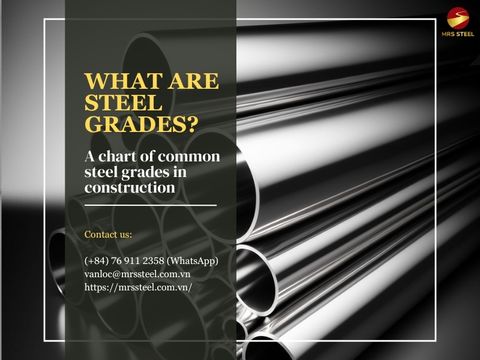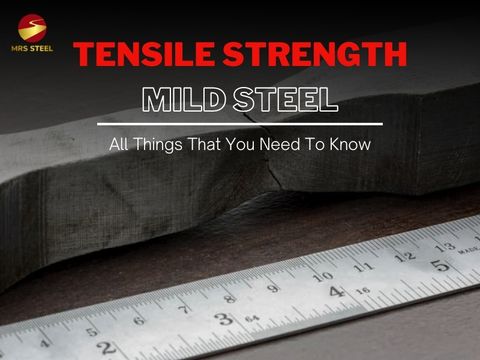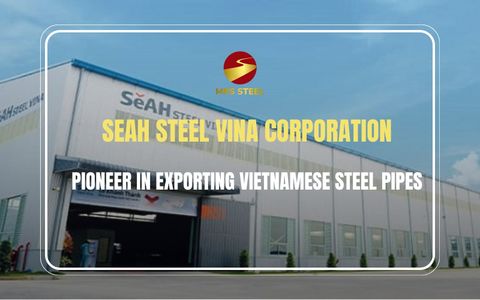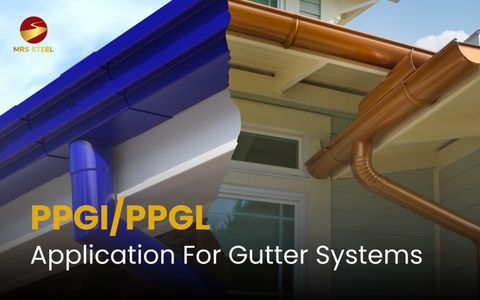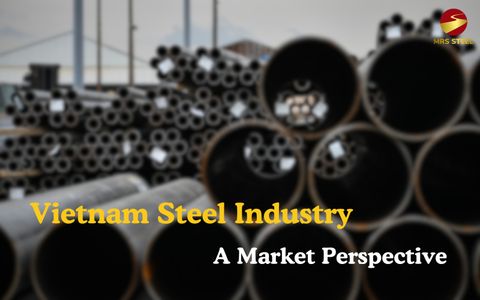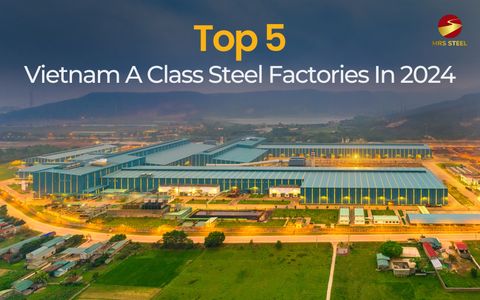Galvanized Steel and Stainless Steel: Which is right for your project

BlogDate: 14-06-2024 by: Ngan Le
Galvanized steel and stainless steel are both types of steel prized for their remarkable corrosion resistance and widespread use across various applications. However, these two types have distinct characteristics, providing a rich variety of options when it comes to selecting the perfect material for your specific needs.
To gain a deeper understanding of their composition, advantages and disadvantages, and to explore further the strengths of galvanized vs stainless steel, let's follow along with MRS Steel through the following sections!

Galvanized steel and stainless steel are two most common steel in various industries
Structural composition of galvanized steel and stainless steel
Galvanized steel is a type of steel coated with a layer of zinc through various methods such as electroplating or hot-dipping. The purpose of galvanizing is to create a protective layer that shields the product from rust and corrosion. The two main components of galvanized steel include zinc, which is present in the protective coating layer, and the remaining component, which is the base steel. The base steel is typically low-carbon steel or carbon alloy steel, responsible for mechanical properties such as hardness, ductility, and tensile strength.
In contrast to galvanized steel, the alloy composition of stainless steel is usually more diverse and extensive, including combinations of chromium, nickel, molybdenum, carbon, and other elements. Among these, chromium plays a key role in forming a natural oxide protective layer on the surface, enhancing corrosion and oxidation resistance.
The structural composition of galvanized versus stainless steel presents significant differences. While galvanized steel is primarily used to protect steel from corrosion by coating it with a layer of zinc, stainless steel is known for its high corrosion resistance due to the natural oxide protective layer on its surface.

Galvanized steel is coated with zinc, while stainless steel contains chromium and nickel
Difference between galvanized and stainless steel
The main difference from the structure and composition of stainless steel and galvanized, which create distinctions in each property of these two types of steel. Let's compare properties such as corrosion resistance, strength, flexibility, and even price of galvanized steel and stainless steel in the upcoming sections with MRS Steel.
Corrosion resistance of galvanized vs stainless steel
In general, stainless steel is regarded as a type of steel that offers better corrosion resistance and durability compared to galvanized steel. The reason comes from the mechanism of corrosion resistance formation of the two types of steel. The nature of galvanization prevents steel from contacting oxygen by a layer of zinc, but if this coating is scratched, it affects the corrosion resistance quality.
Although this zinc coated steel possesses water resistance, it tends to corrode quickly when exposed to seawater. Conversely, stainless steel, with its main component being chromium combined with oxygen in the natural environment, forms a passive chromium oxide layer that helps prevent the common iron oxide corrosion reaction in steel. Even when there are scratches on the surface, the inox steel maintains its corrosion resistance capability around the affected area.

Stainless steel provides superior corrosion resistance versus to galvanized steel
Comparing strength of galvanized versus stainless steel
Galvanized steel is formed from carbon steel after undergoing the galvanizing process, so it also possesses a certain level of hardness but cannot be compared to the hardness of stainless steel. The crystalline structure of stainless steel is typically austenitic, with the characteristic ability to absorb a large amount of carbon, creating a strong network with tensile strength ranging from 500 to 2000 MPa.
When comparing the mechanical properties of galvanized vs stainless steel, this zinc steel type has lower tensile strength ranging from 300 MPa to 500 MPa. Additionally, the manufacturing process significantly affects the hardness of the final product. Specifically, the galvanizing process often focuses on coating zinc onto the substrate, while the production process of stainless steel typically requires precise machining methods to ensure hardness.

In terms of steel strength, stainless steel has greater value of tensile to galvanized steel
How does the flexibility of galvanized vs stainless steel compare?
Both galvanized steel and stainless steel exhibit good ductility, allowing them to be flexible in many machining applications, but galvanized steel tends to be slightly more ductile than stainless steel due to the absence of hard alloys like chromium and nickel. In bending applications, stainless steel typically requires more bending force to achieve the same level of curvature as its competitor.
In machining applications such as welding, this zinc coated steel type is often easier to weld due to its ability to deform without fracturing during welding. Conversely, stainless steel is typically more difficult to weld due to its lower oxidation resistance and ductility, which can lead to welding defects when processing complex structures.

Galvanized steel is easier to process than stainless steel in bending and welding
Analyzing magnetism of galvanized steel and stainless steel
One lesser-known characteristic of stainless steel is its non-magnetic nature, meaning that this rust-resistant steel is a type of steel that is not magnetic and cannot be attracted by magnets. The reason is its magnetic properties, which depend heavily on its crystalline structure. Stainless steel is typically made from austenitic alloys, which fall into the non-magnetic crystalline structure category. Additionally, the presence of certain alloying elements such as nickel and chromium further contributes to this non-magnetic property.
Meanwhile, galvanized steel is derived from low-carbon steel or alloy steel, so when comparing magnetic properties, the stronger magnetism belongs to galvanized vs stainless steel’s magnetic property. In addition, the zinc coating on the surface of galvanized steel typically does not affect its magnetic properties; rather, it primarily depends on the composition of the base steel.

The inox is non-magnetic, while galvanized magnetic properties depend on the composition of its base steel
The cost between galvanized steel and stainless steel
When it comes to manufacturing stages, the simpler production process is characteristic of galvanized versus stainless steel. In order to coat a steel piece with zinc, manufacturers merely need to dip the product into a molten liquid tank. As a result, galvanized steel is significantly more cost-effective, ranging from 1/3 to 1/2 times cheaper than its stainless steel counterpart.
In contrast, stainless steel is often manufactured through a complex process involving expensive specialized equipment. In reality, at some stores, the price of a large-sized stainless steel sheet can range from $150 to $500 or even higher, while zinc-plated steel is much more affordable. For a similar-sized sheet, galvanized steel typically costs between $20 to $100, depending on the size and thickness of the sheet.

The price of stainless steel is 2 to 3 times higher than galvanized steel
Distinguishing the application of galvanized steel and stainless steel
The corrosion resistance of stainless steel is generally considered superior to that of galvanized steel, but when it comes to flexibility in processing, this material is often preferred by manufacturers. It is due to these different advantages and disadvantages that both materials play roles in various applications.
Construction field
In the construction industry, inox steel is rarely used while another common material such as zinc-plated steel is the predominant choice due to the significant difference between galvanized steel and stainless steel’s cost.
The steel with covered zinc is commonly employed in structural frameworks for buildings such as houses, warehouses, and industrial constructions. Additionally, it is utilized for roofing and protective panels due to its excellent corrosion resistance and durability, which contractors often prioritize.
The corrosion resistance of inox is generally regarded as superior to that of galvanized steel, especially in humid or oxidizing environments. Therefore, in construction projects requiring water piping systems, this stainless material is preferred for its high resistance to corrosion, minimizing the risk of water leakage and extending the lifespan of the system.

Constracter often choose galvanized versus stainless steel in steel construction
Heavy industries
In heavy industries, both galvanized steel and stainless steel can fulfill their beneficial roles in specific sectors. However, when it comes to applications for piping systems, zinc plated steel is still not widely used due to the superior corrosion resistance advantages offered by inox steel. In harsh conditions or applications requiring long-term durability such as marine environments and acidic settings, galvanized steel does not maintain corrosion resistance capabilities like stainless steel.
Specifically, in the chemical industry, inox is often found in chemical storage tanks, pipelines, and high-pressure equipment. Similarly, in the oil and gas industry, inox steel is frequently utilized for drilling equipment, pipelines, and components subjected to high temperatures in harsh environments.

In piping systems, contractors choose stainless steel for its excellent corrosion resistance
Kitchen appliances and food
According to research, the material that is evaluated safer for food contact is stainless steel vs galvanized. Inox does not react with acids and alkalis present in food, whereas galvanized steel is not approved by the USDA for food safety, especially for acidic foods. The heat reaction in galvanized steel can generate harmful zinc fumes, and over time, these fumes can accumulate in food, posing respiratory risks.
Therefore, in applications related to food and kitchen accessories, stainless steel remains the top priority choice due to its safety and chemical stability. Kitchen products such as pots, pans, and knife sets are often made from this rust-resistant steel because it does not react with food and is easy to clean. Additionally, components of ovens and gas stoves, such as cooking surfaces and heat-resistant parts, are typically made from stainless steel to withstand high temperatures and resist corrosion.

Stainless steel is food-safe, whereas galvanized emit zinc fumes that accumulate in food
Automobile, aerospace industries
When selecting standard materials for automobile manufacturing, people often discuss galvanized vs stainless steel due to their low production cost, which helps reduce the overall product price. In terms of durability, it is more effective than aluminum, enhancing the safety and lifespan of vehicles. Due to its durability and reasonable cost, galvanized steel currently accounts for nearly 80% of the total steel used in the automotive industry.
Conversely, stainless steel, compared to galvanized steel, is the preferred choice for many aerospace applications because of its excellent strength-to-weight ratio. This means it can reduce the weight of aircraft while maintaining structural integrity, thereby improving performance. Its high tensile strength allows this corrosion-resistant steel type to withstand significant forces, ensuring long-term durability for aircraft structures and various components.

Galvanized are standard materials in automobile while stainless steel is used for aerospace
Finding reputable supplier for galvanized steel and stainless steel with MRS Steel
In summary, although both types of steel have their own advantages and disadvantages, they can still be effectively used in various applications depending on the specific requirements of each application and working conditions.
If you are an importer and need to choose between galvanized steel and stainless steel, determining which material is best for your project, let MRS Steel accompany you on this journey. With many years of experience in the Vietnamese steel market and a reliable network of domestic factories, we are able to provide you with optimization in terms of time and cost throughout the process of searching, selecting products, payment, and delivery.
For any inquiries or consultation needed, please feel free to contact us via WhatsApp: +84 76 911 2358 or email: vanloc@mrssteel.com.vn for free consultation.

With years of experience in the steel market, MRS Steel can optimize cost and time for customer projects



















